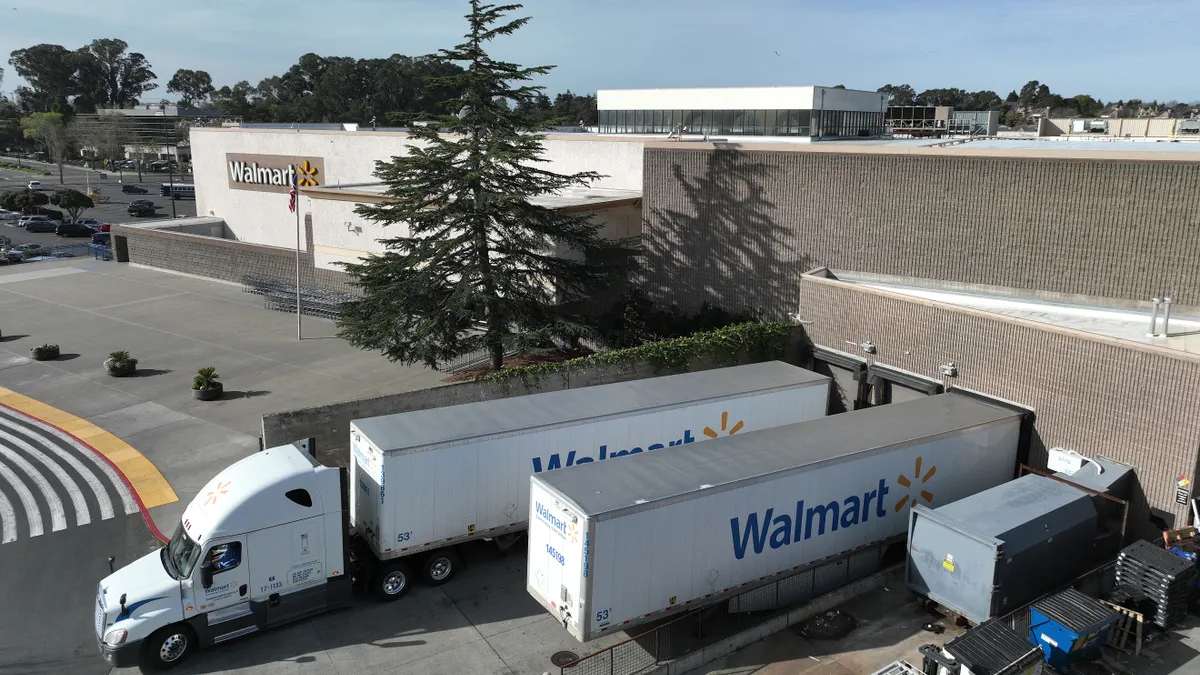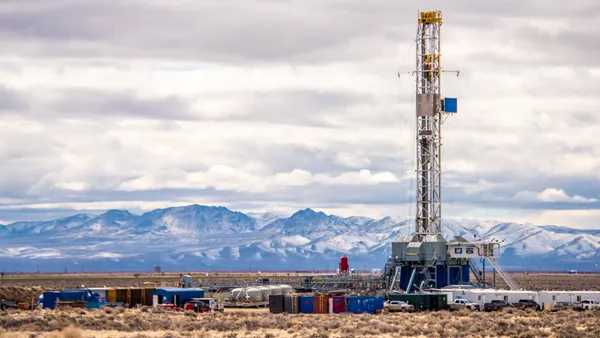Dive Brief:
- Walmart expects to miss its 2025 and 2030 greenhouse gas emissions reduction targets, which the retail giant said in an update posted Wednesday “will require innovation and technology that is not available or economically viable, or fully scalable today.”
- The company in 2020 set goals to reduce its scope 1 and scope 2 greenhouse gas emissions 35% by 2025 and 65% by 2030. However, Walmart said Dec. 18 that its annual operational emissions — which include scope 1 and 2 emissions — rose 3.91% year-over-year in 2023.
- Walmart said the year-over-year increase was due to transportation emissions, aging refrigeration equipment and slowing renewable energy expansion. The company said due to factors beyond its control, including energy policy and infrastructure, it anticipates missing its 2025 and 2030 targets and will consider revising those targets in 2025.
Dive Insight:
Walmart said it will continue to work towards its target of reaching net-zero operational emissions by 2040, but its “progress will not be linear.” The company’s Dec. 18 update said its 2023 operational emissions were 19.3% lower than its 2015 baseline.
In addition to challenges with energy policy and infrastructure in the global markets where Walmart operates, the company said it will miss its likely target date for those emission reductions due a lack of availability of cost-effective, low-emitting refrigeration and heating, ventilation and air conditioning systems. Additionally, Walmart said low-carbon heavy tractor transportation probably will not emerge in a cost-effective manner “until the 2030s.”
“While we continue to work towards our goals, progress depends on many factors outside our control, including public policy, emergence and cost-effectiveness of low carbon technologies, and broad sectoral transitions in energy systems, transportation, materials and agriculture,” Walmart said.
The company said it sees changes to energy grids “in every region” Walmart operates in or sources energy. It also expects the capital and costs of projects to transition to less-polluting refrigerants or renewable energy-powered vehicles to “remain a challenge for the foreseeable future.”
Additionally, Walmart said the calculation of emissions itself is challenging given uncertainties about target-setting and standardization for greenhouse gas emissions. Also, regulator calculations and reporting standards do not always align with voluntary standards, and the emissions factors and industry averages used to calculate emissions can change.
Although the company expects to miss its 2025 and 2030 emissions reduction targets, Walmart is on track or ahead of schedule for another set of climate goals.
The retail giant aims to power half of its operations with renewable energy by 2025 and power all of its global operations with renewable sources by 2035.
As of 2023, the company powered 48% of its global electricity needs with renewable energy and directly procured 30% of its energy needs through renewable contracts. Purchased electricity accounted for all of Walmart’s scope 2 emissions and 46% of its operational emissions for 2023, according to the update.
The company also reached its goal to reduce, avoid or sequester 1 billion metric tons of carbon dioxide equivalent in global supply chains earlier this year, six years ahead of its 2030 target date. Walmart credited its suppliers for reaching the goal, which have reported projects in progress that expect to exceed its gigaton target.
Walmart is not the only company expected to miss its climate ambitions. PepsiCo announced this summer that it anticipates missing several plastics circularity and reduction sustainability goals. More recently, Coca-Cola quietly scrapped a 2030 target to reduce its absolute emissions 25% over a 2015 baseline.
In the financial sector this year, Morgan Stanley abandoned a goal to facilitate 50 million metric tons of plastic pollution prevention, removal or reduction by 2030. The financial institution scrapped the standalone goal due to the lack of data availability, a Morgan Stanley spokesperson said at the time.
The plastic pollution prevention target was folded into a broader sustainable finance goal, according to the spokesperson.










